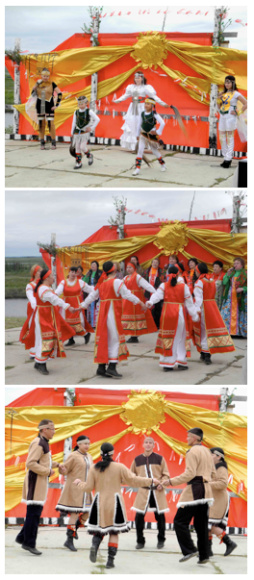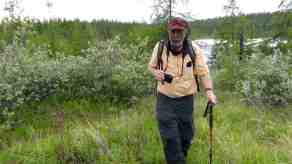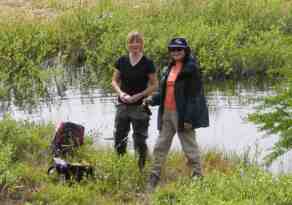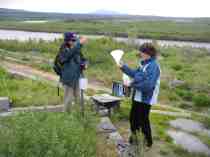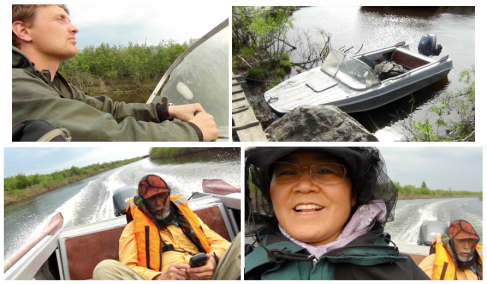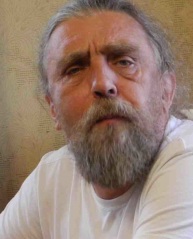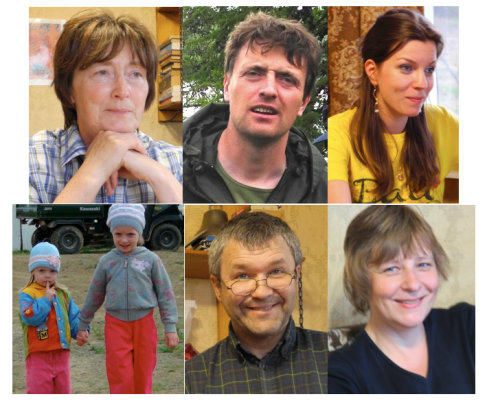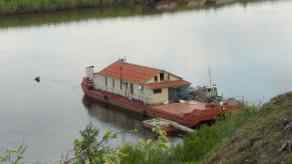
We arrived in Yakutsk early Friday 15 June, as expected, with two hours to make our connection to Cherskiy comfortably. However, with my brilliant calendar-reading capabilities, I thought it was still the 14th (the date on which our flight had left Moscow), and that we had to stay overnight and catch the Cherskiy flight the next morning. For some reason, Xiahong went along with my waning logical skills. We did wonder why we didn’t have a hotel reservation for Yakutsk, but we found a cab driver who took us to see a few hotels, and finally found a decent but overpriced hotel.
The next morning, Saturday (the 15th, I thought) we went to the airport bright and early, still thinking that everything was according to plan. With much discussion at the ticket desk, I finally caught on that it was the 16th, and we had missed our flight by 24 hours. The next flight out was not until Tuesday 19 June! We paid a 25% penalty to re-book for the 19th, and got our friendly cab driver, Naseem, a Kazakh, to schlep us back to town and find a hotel (which turned out to be the same as before).

Eric is talking to the cab driver Naseem.
I do have an excuse for my flawed sense of time and date. We are staying overnight in four different time zones in the space of one week, with a total range of 16 hours. So the jet lag is serious. To make matters worse, it is light 24 hours a day above the Arctic circle, and even in Moscow it did not get completely dark at midnight. So our bodies do not get the visual cues they need to reset their internal clocks. This can leave anyone muddled enough to miss a flight! So here we are, in Yakutsk, with four full days to spend here cut out of the six days scheduled for Cherskiy, where we have work planned.
Yakutsk is a dusty, small city, the capital of the republic of Yakutia (now called Sakha) in the Far East part of Siberia. Half the population are Yakut, less than half are Russian, the smaller groups are from the Kazakh Republic and others. They all seem to interact and intermix seamlessly. The Yakuts look very much like Mongolians, and there are probably ancient connections through Genghis Khan and other travelers and conquerors.
When Yakuts find themselves in all-Yakut groups they speak their Yakut language – which some linguists say is Turkic – instead of Russian. We’ll have to check with Lenore about the linguistic connections, but I believe that Yakut is not similar to the Inuit languages we heard in Barrow and Greenland.
The people here are clearly more high-spirited than are the Muscovites. Young people socialize, chat, and laugh in the streets, whereas Moscow has a more austere atmosphere. In that sense, Yakutsk has a pleasant atmosphere. There are several museums and a theater. But more than one resident has complained that it is too small for them — “you can drive through the town in 5 minutes!” said one of them.
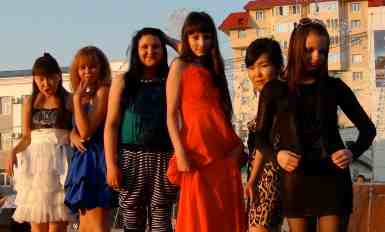
It’s pretty hot here, going well above 30C in the afternoon and not cooling down much during the sunlit nights. It is hard to realize that a mere meter below the surface is the permafrost that regulates life here, where wintertime temperatures are normally around -40C and often drop to -50C, with records around -82C. There is still edible frozen mammoth meat buried in the permafrost. Some villages can be reached only in the winter, when travel over frozen rivers becomes an easy form of transportation. If you are outside your heated garage and you shut off your automobile engine, you can’t use your car again until spring arrives. Heavy fur coats are expensive but they are a necessity.
My Russian was rustier than I thought. I can say what I need to say, in very ungrammatical Russian, and make myself understood by listeners with enough patience. But nobody speaks slowly and clearly enough for me to understand very much. So a lot of hand gestures are necessary. Nevertheless, we’ve been getting by. Here and there we find someone who knows a bit of English, and that can be helpful.
We found out that there is a possibility that there is a flight to Cherskiy tomorrow, Monday 18 June, on which we may be able to use our tickets for the 19th (even though the airport staff denied it). So we’ll go to the airport and give it a try, but we’ll be prepared for the likelihood that we’ll have to come back into Yakutsk for one more day to wait for the flight on the 19th.
We’ve noticed a curious reticence to sell things, probably left over from the Communist-era work “ethic”. You ask for a hotel room. They say there’s none available; go try the next door hotel. Then you ask the same person if there’s a double room. Yes, but only one, at $200 per night. Is there anything less expensive? No, go try the hotel across the street. How about the $140 rooms, is one available. Yes … how many nights would you like to stay? It makes me feel like I’m in Alice’s Wonderland.










































